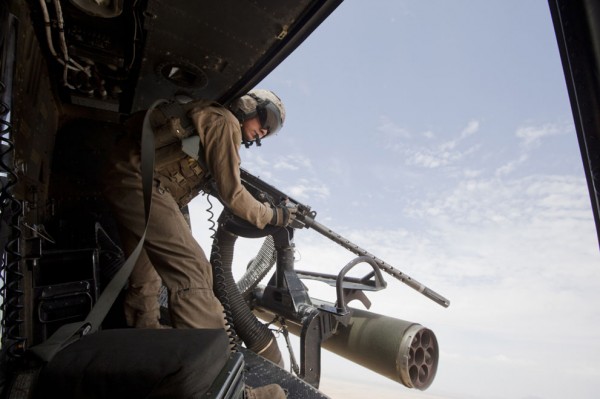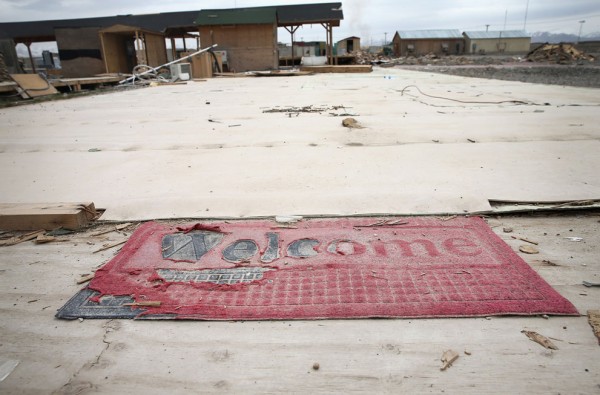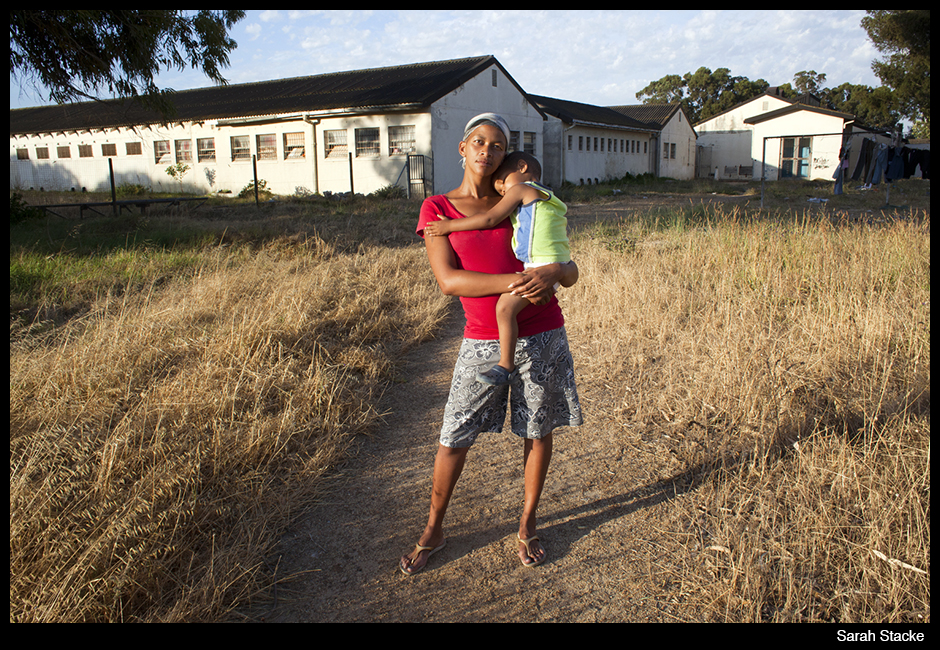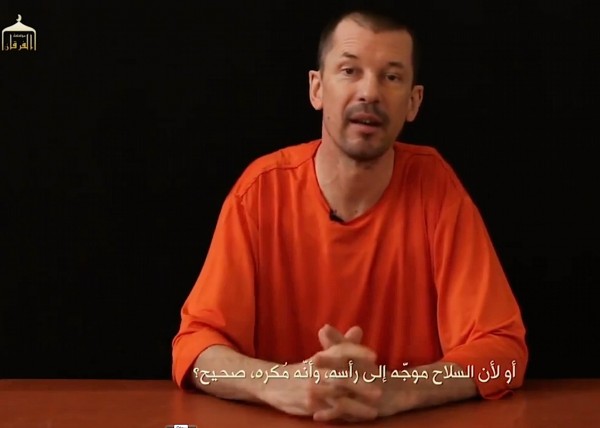Notes
"In Focus": Media Using Pentagon Pics As News Photos (Again)
USMC photo in The Atlantic slide show.
One of the six newswire photos in The Atlantic slideshow on the Afghanistan ramp down. You might detect a slightly different tone.
Whereas most news sites lost interest in America’s war in Afghanistan when the public’s did, The Atlantic’s In Focus photo feature dedicated five years ago, popular or not, to run a regular monthly slideshows of the conflict. (Alan Taylor, the author of In Focus is one of the pioneers of the online visual news web, having founded one of the earliest, if not the first major media large format photo news gallery, The Big Picture, at Boston.com). On September 2nd, Taylor marked the final installment of these regular Afghanistan slideshows with a heartfelt note.
Beyond the milestone and that last look, however, the slideshow was significant for something else — something relevant, too, for the fact that nobody noticed. If you put some extra focus on the captions, what you’ll see is that the media slideshow is overwhelmingly illustrated with images taken by military photographers. (More blurry still is the fact is that there are actually six newswire photos interspersed among the thirty-two created by the Army, Air Force, Marine Corps and National Guard PR machines, further lending the suggestion that a photo taken by a photojournalist for a news organization and one taken by a soldier to ennoble the military really has no difference.
This is not the first time this has happened or the first time we’ve written about it. If you’ve been a long time Bag follower, you might still remember this post from 2005 (Pentagon Pictures, Tal Afar Tales) documenting the use of military photographs by the LA Times in an early assault in the U.S. invasion of Iraq. And then, here’s another example where Katie Couric and CBS took Pentagon photos and labeled them their own. There’s also this example of military photos used as product placement by the Washington Post.
Inculcated with the fear of terrorism, ubiquitous military recruitment advertising, the thematic prominence of the military in the marketing of professional sports and the broad empathy underpinning “support our troops,” I imagine more than a few people might wonder now (Afghanistan reduce to ambient noise and these pictures, consequently, documenting ramp down activity) why the source of these photos even makes a difference. (After all, with the years of belt tightening suffered by the photo media, who would actually turn down free, high quality stuff from the Pentagon?) As we addressed repeatedly during the Iraq War, however (1, 2, 3), the skew just from photographers and journalists embedded with the military is bias enough. Today, with the possibility of the US becoming active in Iraq again, the prospect of turning our eyes, or our media’s eyes over to the government in order to best illustrate the military’s agenda has the feel of déjà vu.
(photo 1: Sgt. Frances Johnson/USMC. caption: Lance Cpl. Matthew Ghibaudi, a UH-1Y Huey crew chief with Marine Light Attack Helicopter Squadron 369, performs a weapons check before an aerial assault support mission covering ground convoys in Helmand province, on May 3, 2014. Before the last Marines and sailors of Forward Operating Bases Nolay and Sabit Qadam convoyed out of northern Helmand to return to Camp Leatherneck for the final time, the “Gunfighters” of HMLA-369 and “Heavyweights” of Marine Heavy Helicopter Squadron 466 provided overwatch for returning vehicle convoys as well as retrograde support. photo 2: Scott Olson/Getty Images. caption: A welcome mat and foundation are all that remain of a building site in an area on Forward Operating Base Shank that is no longer used due to a shrinking population on April 3, 2014.)




Reactions
Comments Powered by Disqus